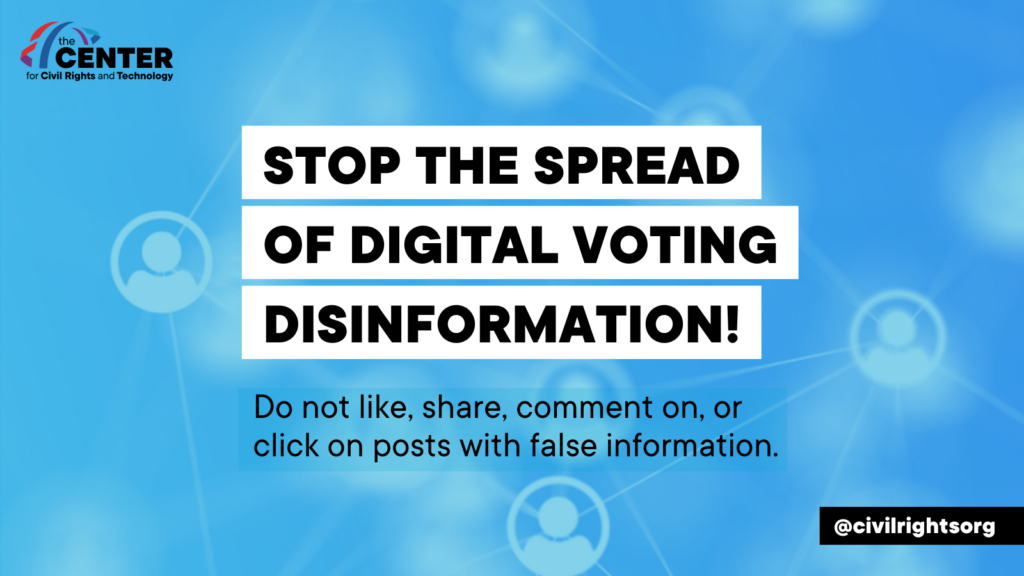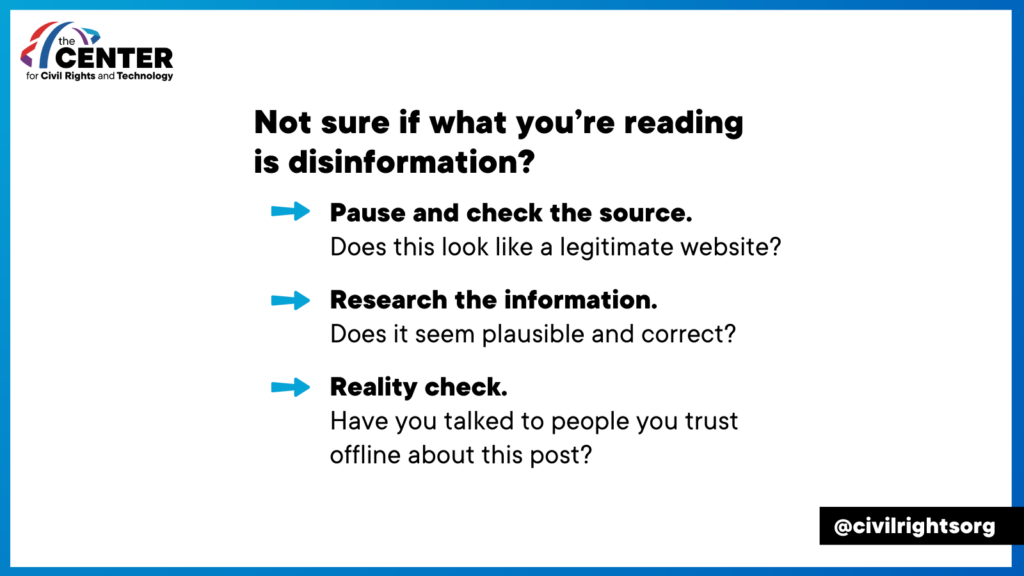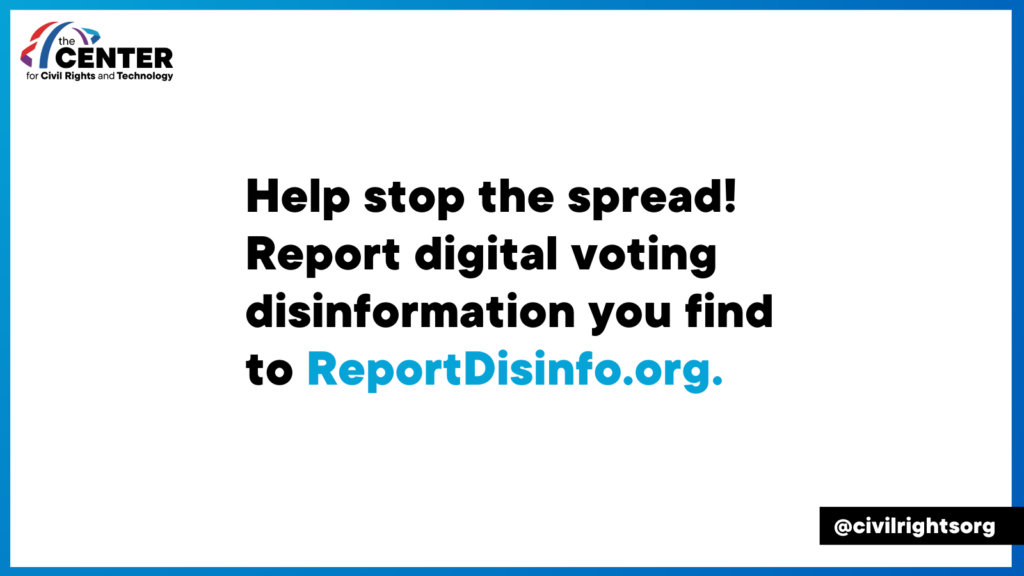Versión en español
What is digital voting disinformation?
Digital voting disinformation is false content about elections that is circulated on the internet (typically on social media platforms like Facebook and X) with the intent to harm particular groups, like communities of color, women, immigrant communities, and other historically marginalized groups. Misinformation, on the other hand, is misleading information that is spread mistakenly and without intent to harm.
Disinformation is often framed as a news story or other writing that bears some truth, but overall is intended to mislead. Sometimes disinformation takes the form of deepfakes, a deceptive tactic that has taken off with the development of artificial intelligence. A deepfake, as defined by Microsoft, is “a fraudulent piece of content—typically audio or video—that has been manipulated or created using artificial intelligence. This content replaces a real person’s voice, image, or both with similar looking and sounding artificial likenesses.” As recent history shows, deepfakes often use the image and likeness of trusted messengers to deceive voters.
Why is digital voting disinformation destructive to our democracy?
Digital voting disinformation is Jim Crow-era voter suppression in sheep’s clothing. It’s intended to dissuade our communities from voting by spreading false information around the elections, including when, where, and how to cast your ballot; the counting of ballots as well as other processes; and administration of elections. These lies sow distrust in our democracy and can fan the flames of hate and violence against our communities and public servants.
What can voters do about digital voting disinformation?



When Big Tech and the government fail to act to address voting disinformation spreading online, as voters we have the power to protect ourselves and ensure our elections are fair and free. Read tips and connect to resources on how to combat digital disinformation as voters below:
Consider the source: Think about the source. Is this a reputable website? Is this a website you trust and have read before or is this coming from a site you never heard of? Does the url look unusual? Do the footnotes or citations link out to real sites? If you are not sure whether the information you are seeing is true, look for trusted leaders and national or local news sources to see whether they are reporting or sharing the same information.
Check the author by doing a quick search to validate a person’s credibility and existence. It’s especially important to check your facts when consuming information on X (formerly Twitter) because the platform has made it more difficult to verify individual profiles – even removing verification for some people, organizations, news sites and corporations – unless they pay to keep their verification badges.
Do your own research: If you are surprised by a post that you see online, dig a little deeper. Do a web search on what you saw in the post – if it is disinformation that went viral, there will likely be information and other posts that will confirm that. You can also check the links in the post to see whether they take you to a trusted source or do a separate search for information to see if it matches with the information in the post. Conduct a reverse image search to confirm images are real and accurate.
Do not reply to, share, retweet, or cross post disinformation: If you are still not sure, do not engage with or share the content until you receive more information to verify a claim. Interacting with the post in any way, even if attempting to debunk it, can help it spread even further. While counterintuitive, often doing nothing can be your best option.
Flag and report: Flag false content for social media platforms and report it to reportdisinfo.org.
Facebook: How do I mark a Facebook post as false news? or Report Content on Facebook
Instagram: Reducing the Spread of False Information on Instagram
LinkedIn: Recognize and report spam, inappropriate, and abusive content
X (formerly Twitter): Report a Post, List, or Direct Message
Get a reality check: Take a break from being online. Engage with people you trust about the posts and content you’ve been seeing online, and share these resources with them.
Additional Resources
Media Literacy
Bad News Game
Civic Online Reasoning (For teachers and students)
The News Literacy Project: Election 2024
Election 2024: Misinformation Dashboard
Trusted Election Information
Cybersecurity & Infrastructure Security Agency: Election Security Rumor vs. Reality
Election Protection Hotline
National Association of Secretaries of State: #TrustedInfo2024
National Association of State Election Directors: Election FAQs
Vote411.org
Vote.gov
Fair Elections Center
Nonprofit VOTE – Voting in Your State
Fact Checkers
Desi Facts (English, Hindi & Bengali)
FactCheck.org
Fact Check from Duke Reporters’ Lab (Interactive map to local resources)
Factchequeado (Spanish-language)
Media Bias/Fact Check
Piyao Ba (Simplified Chinese)
PolitiFact
Snopes
The Washington Post Fact Checker
Viet Fact Check

This guidance was pulled together by the Center for Civil Rights and Technology


